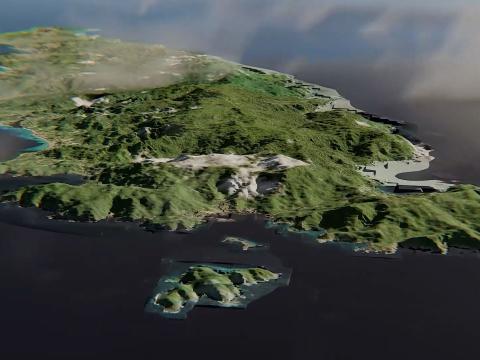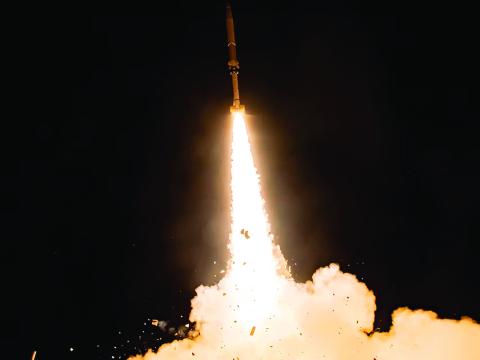On Point: Q&A With Dr. Jaime Stearns
Dr. Jaime Stearns is the Air Force Research Laboratory’s (AFRL’s) Space Vehicles Directorate flight experiment principal investigator. She coordinates the directorate’s research and development activities in space situational awareness and command and control in support of defensive space operations. The directorate includes a diverse team of scientists and engineers drawing on experience in astrodynamics, astronomy and decades of AFRL space experiments.
What is Oracle?
This flight experiment is the culmination of a multiyear-long research effort dedicated to developing the technology needed to track space objects beyond geosynchronous Earth orbit (GEO).
Why is AFRL pursuing such a program?
As NASA and commercial companies look to return to the moon, there is an emerging need for space domain awareness (SDA) in this regime to ensure a safe operating environment for all. Currently, the U.S. Space Force provides these data to the world via space-track.org, but its capabilities are optimized for GEO and below. The AFRL is developing the technologies to expand this capability beyond GEO in support of civil and commercial activities in the coming decades.
Why is the Oracle spacecraft needed?
There are regions of cislunar space, particularly in the Earth-moon corridor and behind the moon, that are difficult to observe from the Earth or traditional orbits like GEO. This is because of both the vast distances involved and the lighting conditions that make it difficult to employ telescopes to observe the moon, such as when the moon and sun are up at the same time or at full moon. Flying a spacecraft near Earth-Moon Lagrange Point 1 lets us test the technologies we are developing to perform SDA and operate in this new regime.
What does AFRL hope to accomplish with the system?
AFRL will demonstrate core technologies to conduct SDA in cislunar space, including demonstration of sufficient position knowledge, advanced sensing and processing for cataloguing and custody of objects in cislunar space and successful follow-up detection of objects in the catalogue.
How will the capability benefit the U.S. Space Force?
This research benefits all space operators by providing the techniques needed for domain awareness beyond GEO. This awareness is key to effective stewardship of cislunar space for
civil and commercial activity to flourish in the coming decade.
Why are cislunar capabilities needed now?
NASA has stated an intent to return to the moon this decade, and other civil and commercial entities have likewise formulated plans to operate in cislunar space in the coming years. The time is ripe to perform the research and technology development to ensure the cislunar SDA capability is ready when it is needed.
What are the challenges of operating in cislunar?
There are two key challenges that become more difficult farther from the Earth. First is communications. The ability to send and receive commands and data will be less frequent and at lower data rates than satellites closer to Earth can expect, so more automation and onboard processing will be needed. Second is position knowledge, a critical element of performing space domain awareness. Reliable techniques exist, but we are also interested in methods that are more accurate and scalable to future needs.
What kind of sensors, communications and navigation systems may be needed to support the spacecraft’s operations in cislunar?
We are focused on the sensors, communication, and position knowledge needed to perform the SDA mission.
What are AFRL’s goals for the program in fiscal year 2023 and 2024?
AFRL is currently focused on source selection and will have more details on the program schedule once we award.
What challenges does AFRLface in implementing this program?
This is a very technologically challenging area for all the reasons listed above.
This story was updated at the request of the Air Force Research Lab. Oracle was previously known as the Cislunar Highway Patrol System.





Comments